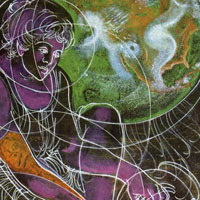There are two ways over the last two centuries that people have made climate: through practices of industrialisation and land exploitation which launched the carbon economy and through scientific practices of observation, calculation and representation. This project studies the changing historical relations between these two regimes of practice, which gave rise both to how climates came to be known and to the human activities which have re-made climate. We pay particular attention to the ways that interrelations between making and knowing helped define new scales of natural phenomena and human action, and notably the notion of global scale itself. Rather than assuming that climate is a global phenomenon, the project thus explores how the evolving conceptions of climate developed since the early nineteenth century have accompanied definitions and redefinitions of globally-scaled agency. In its most ambitious forms we can call this process 'globe-strapping'. Examining the geographies of European engagement with climate in this period will show several iterations of a process by which protagonists asserted that sets of phenomena worked on the planetary scale; used this assertion to get resources to work on unprecedentedly vast scales; and then referred to the outputs of this work to justify the initial assertion. Recently a similar strategy has engaged temporality in discussions over the relations between human and natural geologies. The unfolding of millions of years of climate history in sea floor sediments and cored ice-sheets has been joined by arguments for the unprecedented, geological scale of human activity; and led both to proposals to define an entirely new period and to urgent demands to change climate now. We might call this 'time-turning'. Making Climate History seeks new orientation to this melding of natural and human global change by examining the making of physics as a global science and of climate as a historical science over the past two centuries.
We disclose the contingent ways in which measurement technologies and representational practices were developed in the making of climate science and knowledge. We seek to unravel the extent to which these coevolving technologies and practices were rooted in the social and technological changes of the period. These changes were increasingly re-making the climates being made known through science. There is thus a deeply recursive relationship between the trajectories of climate knowledge and of socio-technical development during this period. This is what Jasanoff refers to as constitutive co-production: 'the proposition that the ways in which we know and represent the world ... are inseparable from the ways in which we choose to live in it. Knowledge and its material embodiments are at once products of social work and constitutive of forms of social life' (Jasanoff 2004, 2–3). We approach these interrelated events with the special skills and concerns of historians and geographers working across a range of sources (artefacts, maps, documents, oral histories) and with a range of theoretical commitments, drawn from material histories, environmental history, critical cartography, oral history, science and technology studies. This offers us an ability to reveal a story about how climate was made (in both senses) which significantly extends earlier close readings of the history of climate science (even when they have been conjoined with studies of patrons and publics (e.g. Weart 2003, Fleming 1998)), as well as political histories of climate change (Oreskes and Conway 2010, Howe 2014, Malm 2016). We complement these important studies, and the primary focus of much earlier work on meteorology and modelling (Jankovic 2001, Golinski 2007, Anderson 2005, Harper 2008, Edwards 2010) with more comprehensive treatments of the geographies of climate and the temporalities of climate change over 200 years. Critically we also engage a much wider array of the people, groups and scientific disciplines who yielded this knowledge, both then and in the recent past. Four related work streams and the curation of living histories are designed to disclose the intimate but changing relations between their work with time and place, and the emergence of the carbon economy. Individually, each work strand offers specific critical impetus to historical and contemporary commentary on the emergence of climate problematics. Taken together they address the geographies and temporalities of climate, unfolding both the shifting eras and careful periodicities that must be reckoned with to claim unprecedented change, and the diverse representations, measures and material transformations of specific locales required to know them as global. Collectively, the jointly authored book that constitutes the headline outcome of the study will offer a ground breaking synoptic account of the development of the climate sciences over the longue durée.
Who should care about this? Climate change is, rightly, deeply political – it operates as a site of contested polemics and contrasting visions of the good life and a just world. Offering richer and thicker accounts of how climate became a site of politics in this way – through the deep relationship between making and knowing the world – offers a necessary corrective to 'thin' accounts of climate change in contemporary discourse which promise either technical, scientific, political or social solutions. Our account suggests that such solutions can only ever be partial, and never predictable, and therefore will themselves remake climate in new ways. Gaining appropriate perspective on the troubling idea of climate change therefore depends precisely on learning how to track the faults, fissures and fusions of making and knowing together.

